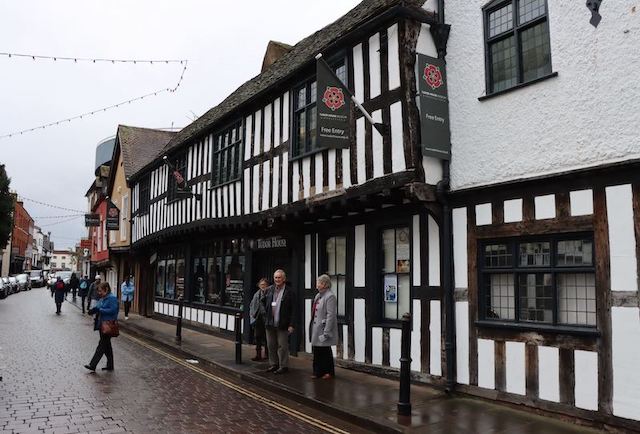Tudor House Museum, nestled within the heart of Worcester, isn’t just a beautiful building; it’s a remarkably preserved time capsule, offering a tangible connection to the city’s rich medieval and Tudor past. Unlike many museums, Tudor House retains much of its original character, making it a truly immersive experience for visitors.
Early Origins – A Medieval Manor
The story of Tudor House begins long before the Tudor period. The site was originally a motte-and-bailey castle, built around 1080 by William the Conqueror as part of the Norman invasion of England. This early fortress, known as “Worcester Castle,” was a vital strategic point, controlling access to the River Severn and ensuring Norman dominance. The earthworks of the original castle are still visible beneath the museum’s foundations, a powerful reminder of its martial beginnings.
Over the subsequent centuries, the site evolved. By the 14th century, it had become a substantial manor house, the home of the de Verdun family. Evidence of this period survives in the remains of the 14th-century Great Hall, the heart of the house and a key feature of the museum today.
The Tudor Transformation
The Tudor period (1485-1603) witnessed significant changes to the house. While the original Norman structure remained, the Tudor family, the Ferrars, undertook extensive renovations, transforming it into a grand Tudor residence. This phase is particularly well-documented thanks to the surviving features – intricate brickwork, decorative fireplaces, and the impressive stone staircase.
The Ferrars were a wealthy family, involved in trade and local government, and their influence is reflected in the quality of the building and its furnishings. Interestingly, the building survived the Reformation largely unscathed, a testament to the family’s relatively conservative religious views.
Later History and Preservation
Following the Elizabethan era, the house passed through various hands, including a period as a hunting lodge. In the 19th century, it was purchased by Sir Robert Hargrave, who meticulously restored much of the building, solidifying its historical integrity.
The 20th century saw a renewed interest in the house. It was acquired by the Worcestershire Archaeological Committee in 1937 and eventually opened to the public as a museum in 1961. Today, the museum is managed by the Worcestershire Museum & Art Gallery.
What You Can See Today
Visitors to Tudor House can explore:
- The Great Hall: A magnificent space offering a glimpse into Tudor life.
- The Kitchens: Revealing the daily routines of Tudor cooks.
- The Tower: A space that would have served as the family’s private quarters.
- The Medieval Garden: A recreated garden that provides a sense of the original landscape.
Tudor House Museum: More Than Just a Building
Tudor House Museum offers a rare opportunity to step back in time and experience life in a Tudor manor house. Its survival is remarkable, and its preservation ensures that future generations can connect with the fascinating history of Worcester.
Discover more from LandmarkLocation.com
Subscribe to get the latest posts sent to your email.

